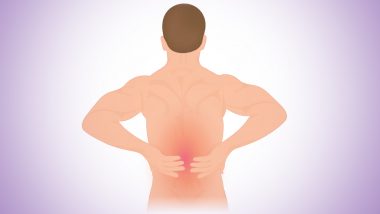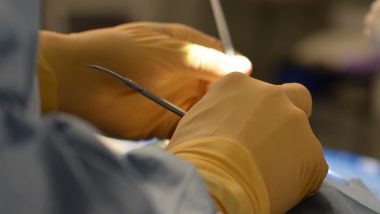Fukuoka, November 26: Researchers at Kyushu University's Graduate School of Pharmaceutical Sciences have discovered a unique population of spinal cord astrocytes with a role in producing pain hypersensitivity to strengthen the effect of chronic pain treatments.
According to a study using mouse model by Kyushu University, researchers revealed the identification of a unique population of astrocytes in the dorsal horn of the spinal cord of mice that produces pain hypersensitivity when activated by neurons carrying signals down from the brain which indicate the role of descending neurons in controlling spinal pain transmission, not limited to suppression; suggesting this group of astrocytes as a new target to enhance the effect of chronic pain treatments. Also Read | National Family Health History Day 2020 Date, History & Significance: Know More About the Family Celebration Observed on Thanksgiving Day.
The researcher's state that an assortment of non-neuronal cells first discovered in the mid-nineteenth century also plays a wide variety of important roles. Also Read | National Milk Day 2020: From Stronger Bones to Lowering Blood Pressure, Here Are 5 Reasons to Have This Nutrient-Rich Liquid Food Daily.
The glial cells named after the Greek word 'glue' are now known to be the critical elements for regulating neuronal development and function in the central nervous system.
According to researchers, a detailed understanding of the groupings of astrocytes with distinct properties is yet to be done to understand the different types of glial cells and their roles.
Makoto Tsuda, professor at Kyushu University's Graduate School of Pharmaceutical Sciences and his team have discovered a unique population of spinal cord astrocytes with a role in producing pain hypersensitivity. "The discovery of this new population of astrocytes reveals a new role of descending LC-NAergic neurons in facilitating spinal pain transmission," explains Tsuda.
According to the study, the astrocytes found near the back of the spinal cord are in a region known to carry general sensory information such as pressure, pain, and heat from around the body to the brain.
With the use of mouse model, the researchers showed that stimulating noradrenergic (NAergic) neurons carry signals from the locus coeruleus (LC) in the brain down to the spinal dorsal horn and activates the astrocytes which result in pain hypersensitivity.
Considering these findings, the results conclude descending LC-NAergic neurons can help suppress pain transmission in the spinal dorsal horn and may enhance the effect of drugs for chronic pain.
According to the study, for the initial test, the researchers genetically engineered mice in which the response of astrocytes to noradrenaline was selectively inhibited. This gave them the final results of using duloxetine, an analgesic drug to increase levels of noradrenaline in the spinal cord by preventing uptake by descending LC-NAergic neurons.
"Although we still need more studies with different drugs, this astrocyte population appears to be a very promising target for enhancing the therapeutic potential of drugs for chronic pain," says Tsuda.
(This is an unedited and auto-generated story from Syndicated News feed, LatestLY Staff may not have modified or edited the content body)













 Quickly
Quickly





















